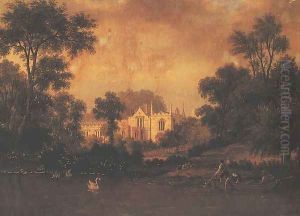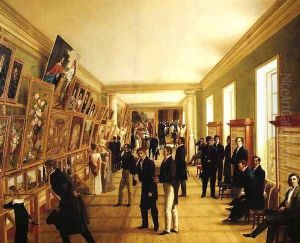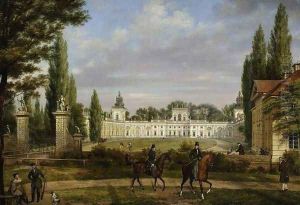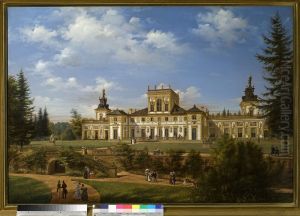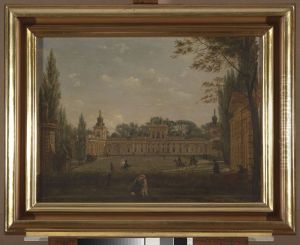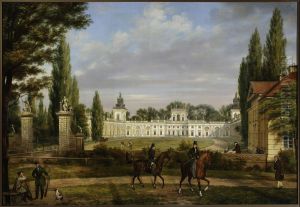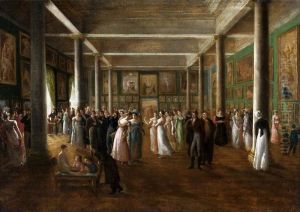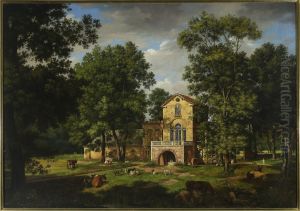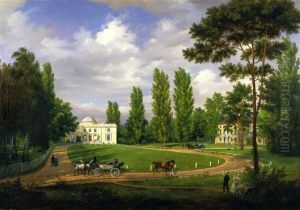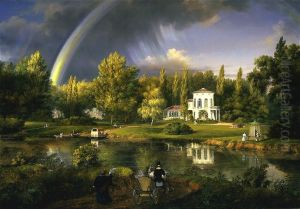Wincenty Kasprzycki Paintings
Wincenty Kasprzycki was a Polish painter known for his contributions to the Romantic period in Polish art, with a particular emphasis on historical painting. Born on March 2, 1802, in Warsaw, then part of the Duchy of Warsaw, Kasprzycki's life was set against the backdrop of a Poland that was undergoing significant political and social changes. His early education and exposure to art history would have been influenced by the rise of Polish nationalism and the country's struggles for sovereignty.
Kasprzycki initially trained at the Warsaw School of Drawing before continuing his studies at the Academy of Fine Arts in Warsaw, where he honed his skills in painting and drawing under the guidance of notable instructors. His talent was evident early on, and he soon became recognized for his ability to capture historical and military subjects with a dramatic flair, which resonated with the national sentiments of the time.
Throughout his career, Kasprzycki remained dedicated to Polish subject matter. He is particularly remembered for his depictions of important battles and military figures of Poland's past, which became symbols of national pride and resistance. His works often featured vivid colors, strong contrasts of light and shadow, and dynamic compositions. These elements helped to evoke the emotional intensity and patriotism of the historical events he portrayed.
Kasprzycki's most renowned paintings include grand scenes of battles such as the 'Battle of Raclawice', which depicts a pivotal moment during the Kosciuszko Uprising, and 'Battle of Somosierra', illustrating a moment from the Peninsular War when Polish soldiers distinguished themselves. Such paintings played a significant role in shaping the visual iconography of Polish history and were influential in fostering a collective memory of Poland's military achievements.
Despite his relatively short life, Kasprzycki's impact on Polish art was profound. He passed away on May 23, 1849, in Warsaw, leaving behind a body of work that continued to inspire future generations of Polish artists. His paintings are preserved in various museums and collections in Poland, serving as a testament to his artistic legacy and the enduring spirit of Polish nationalism.
